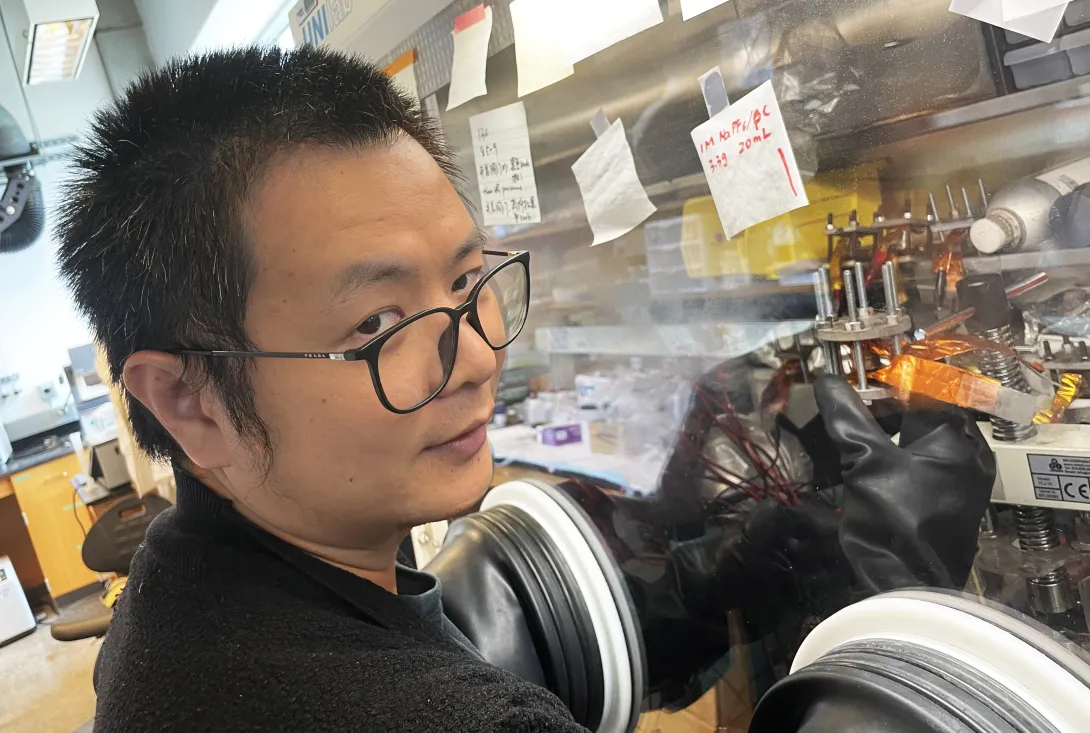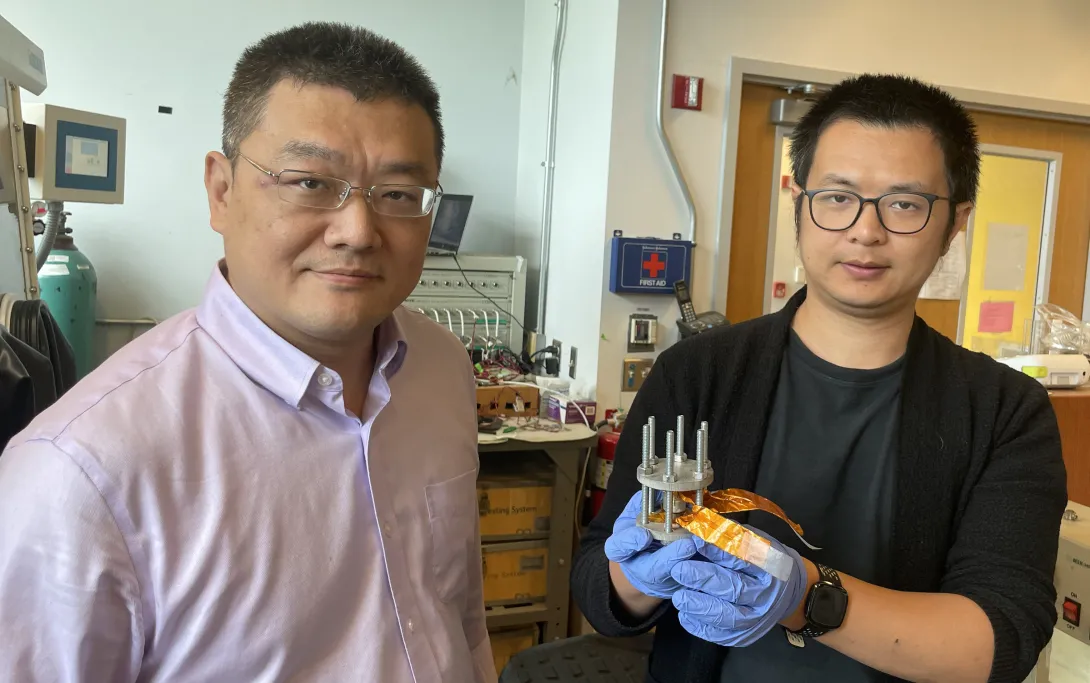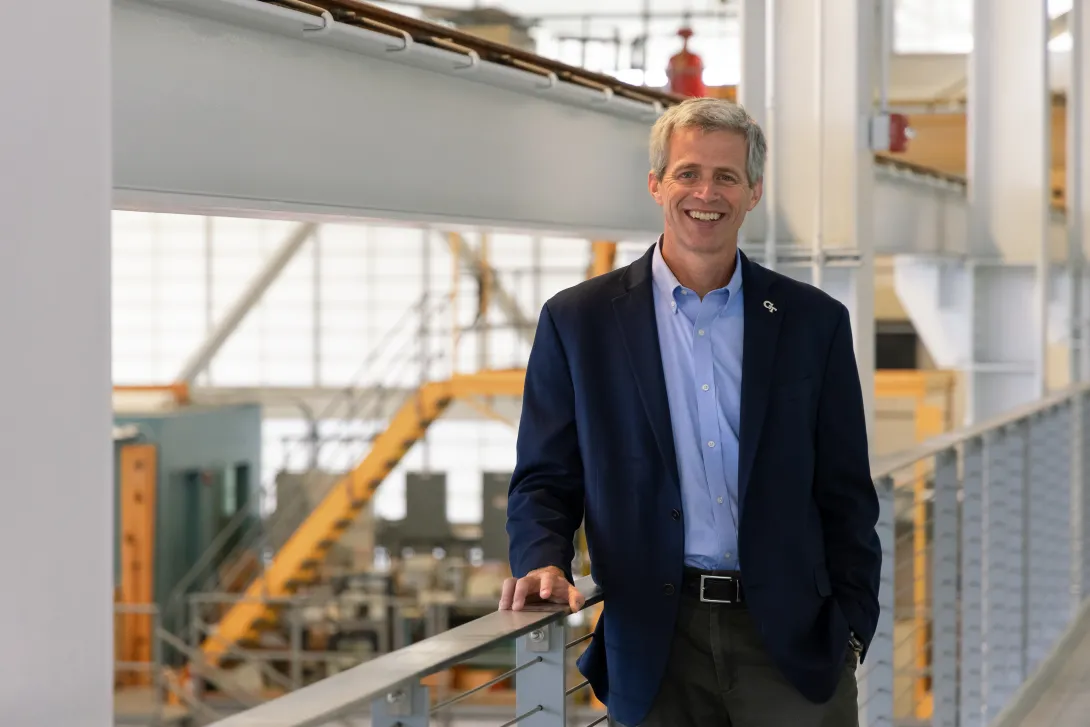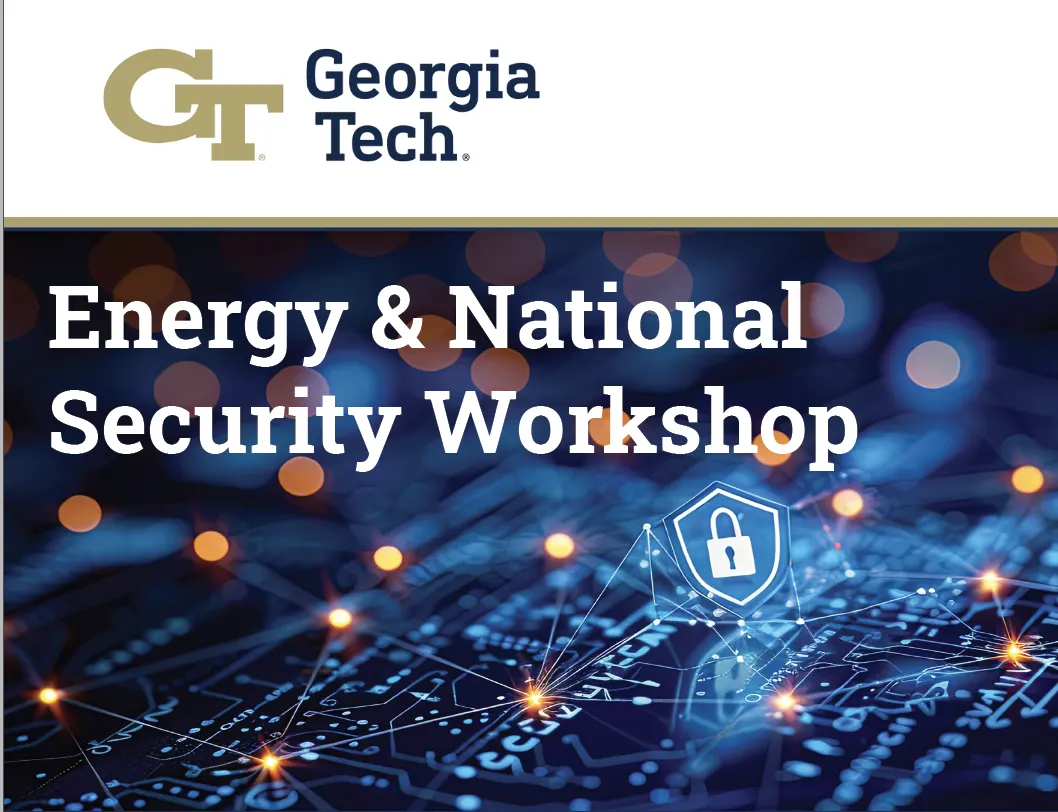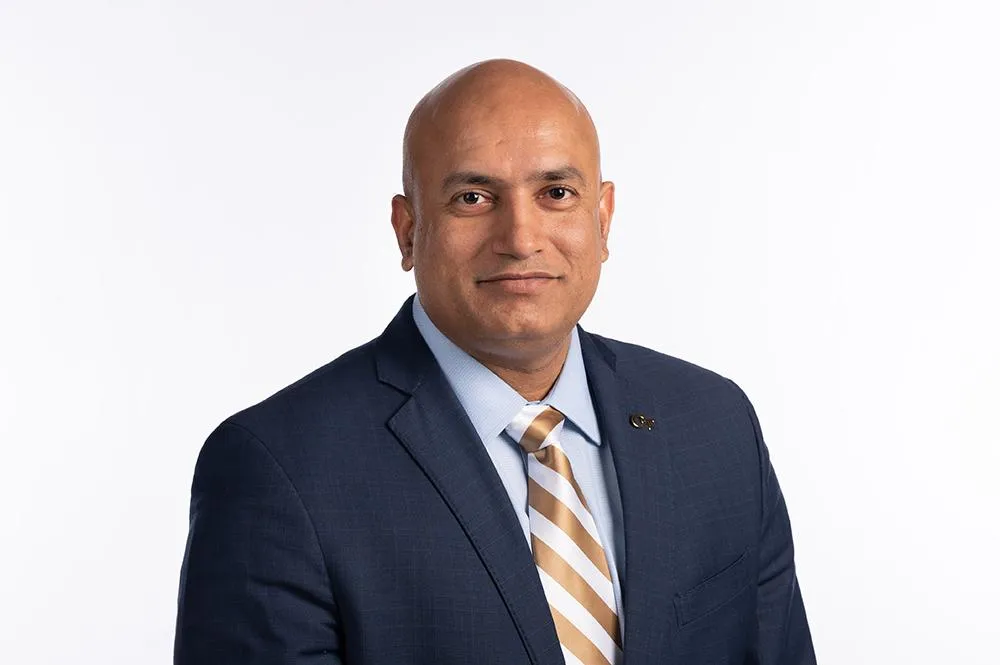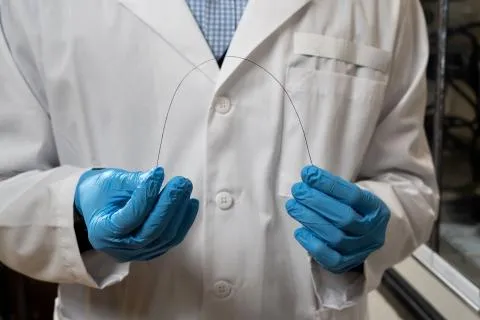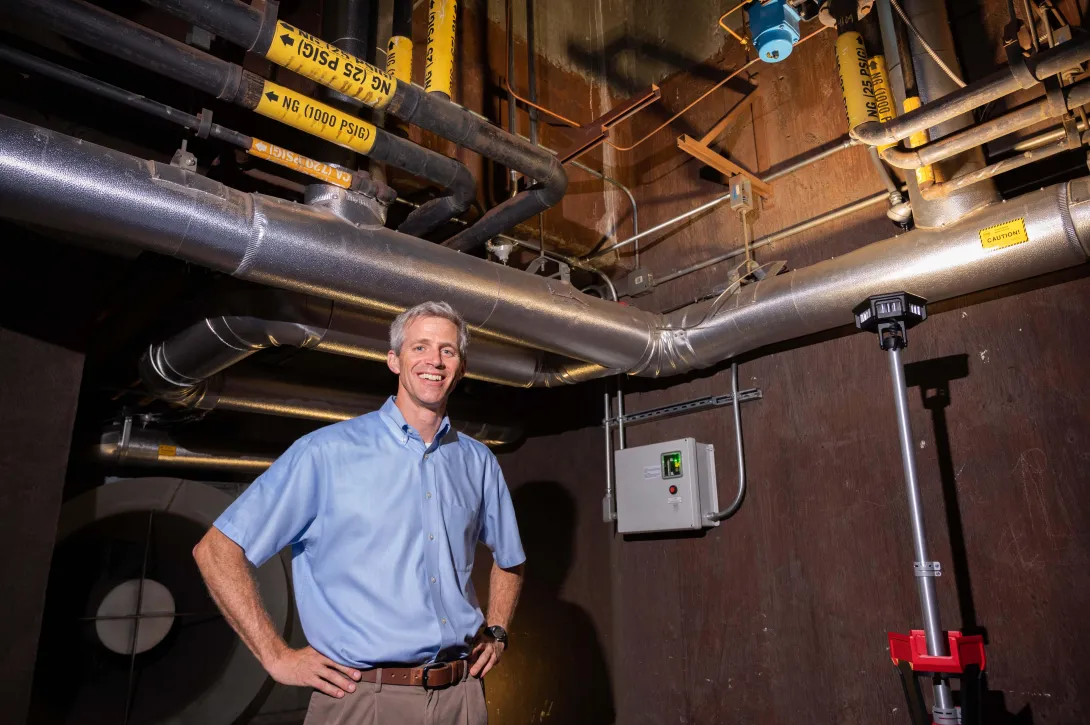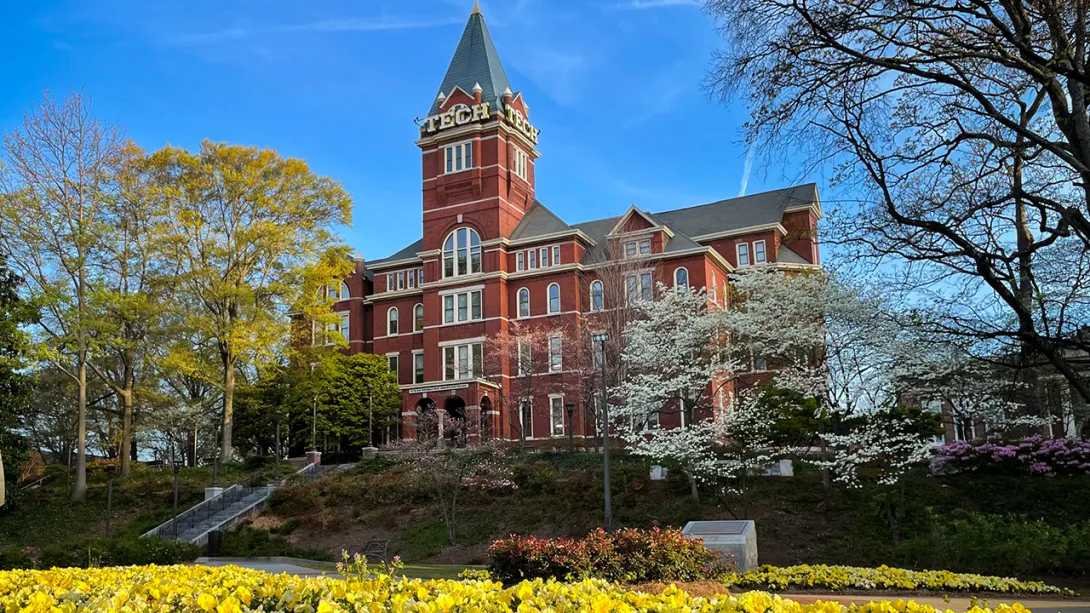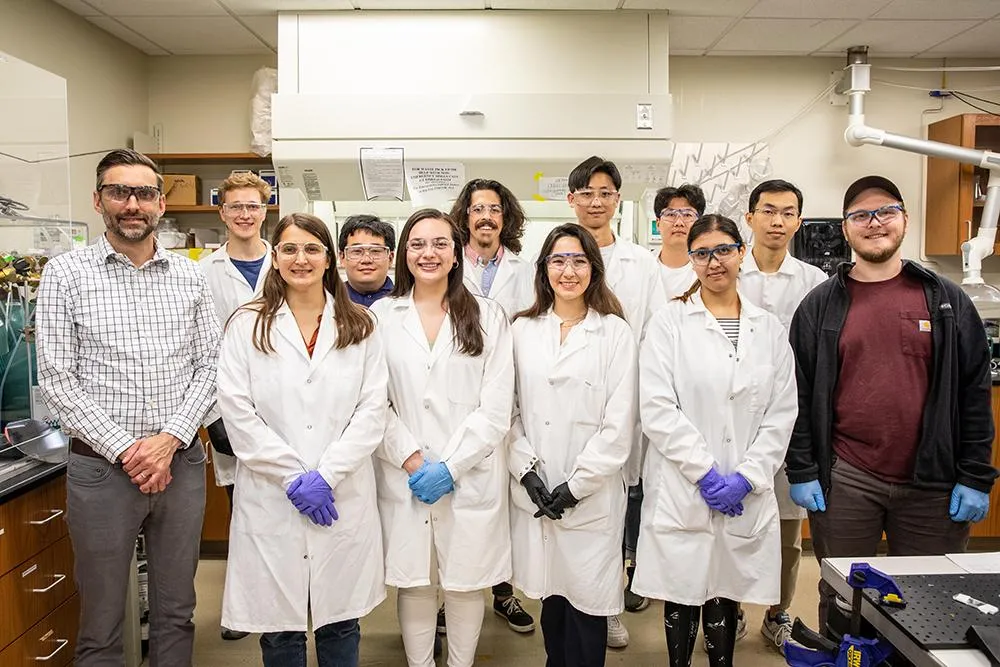Sep. 22, 2024
A multi-institutional research team led by Georgia Tech’s Hailong Chen has developed a new, low-cost cathode that could radically improve lithium-ion batteries (LIBs) — potentially transforming the electric vehicle (EV) market and large-scale energy storage systems.
“For a long time, people have been looking for a lower-cost, more sustainable alternative to existing cathode materials. I think we’ve got one,” said Chen, an associate professor with appointments in the George W. Woodruff School of Mechanical Engineering and the School of Materials Science and Engineering.
The revolutionary material, iron chloride (FeCl3), costs a mere 1-2% of typical cathode materials and canstore the same amount of electricity. Cathode materials affect capacity, energy, and efficiency, playing a major role in a battery’s performance, lifespan, and affordability.
“Our cathode can be a game-changer,” said Chen, whose team describes its work in Nature Sustainability. “It would greatly improve the EV market — and the whole lithium-ion battery market.”
First commercialized by Sony in the early 1990s, LIBs sparked an explosion in personal electronics, like smartphones and tablets. The technology eventually advanced to fuel electric vehicles, providing a reliable, rechargeable, high-density energy source. But unlike personal electronics, large-scale energy users like EVs are especially sensitive to the cost of LIBs.
Batteries are currently responsible for about 50% of an EV’s total cost, which makes these clean-energy cars more expensive than their internal combustion, greenhouse-gas-spewing cousins. The Chen team’s invention could change that.
Building a Better Battery
Compared to old-fashioned alkaline and lead-acid batteries, LIBs store more energy in a smaller package and power a device longer between charges. But LIBs contain expensive metals, including semiprecious elements like cobalt and nickel, and they have a high manufacturing cost.
So far, only four types of cathodes have been successfully commercialized for LIBs. Chen’s would be the fifth, and it would represent a big step forward in battery technology: the development of an all-solid-state LIB.
Conventional LIBs use liquid electrolytes to transport lithium ions for storing and releasing energy. They have hard limits on how much energy can be stored, and they can leak and catch fire. But all-solid-state LIBs use solid electrolytes, dramatically boosting a battery’s efficiency and reliability and making it safer and capable of holding more energy. These batteries, still in the development and testing phase, would be a considerable improvement.
As researchers and manufacturers across the planet race to make all-solid-state technology practical, Chen and his collaborators have developed an affordable and sustainable solution. With the FeCl3 cathode, a solid electrolyte, and a lithium metal anode, the cost of their whole battery system is 30-40% of current LIBs.
“This could not only make EVs much cheaper than internal combustion cars, but it provides a new and promising form of large-scale energy storage, enhancing the resilience of the electrical grid,” Chen said. “In addition, our cathode would greatly improve the sustainability and supply chain stability of the EV market.”
Solid Start to New Discovery
Chen’s interest in FeCl3 as a cathode material originated with his lab’s research into solid electrolyte materials. Starting in 2019, his lab tried to make solid-state batteries using chloride-based solid electrolyteswith traditional commercial oxide-based cathodes. It didn’t go well — the cathode and electrolyte materials didn’t get along.
The researchers thought a chloride-based cathode could provide a better pairing with the chloride electrolyte to offer better battery performance.
“We found a candidate (FeCl3) worth trying, as its crystal structure is potentially suitable for storing and transporting Li ions, and fortunately, it functioned as we expected,” said Chen.
Currently, the most popularly used cathodes in EVs are oxides and require a gigantic amount of costly nickel and cobalt, heavy elements that can be toxic and pose an environmental challenge. In contrast, the Chen team’s cathode contains only iron (Fe) and chlorine (Cl)—abundant, affordable, widely used elements found in steel and table salt.
In their initial tests, FeCl3 was found to perform as well as or better than the other, much more expensive cathodes. For example, it has a higher operational voltage than the popularly used cathode LiFePO4 (lithium iron phosphate, or LFP), which is the electrical force a battery provides when connected to a device, similar to water pressure from a garden hose.
This technology may be less than five years from commercial viability in EVs. For now, the team will continue investigating FeCl3 and related materials, according to Chen. The work was led by Chen and postdoc Zhantao Liu (the lead author of the study). Collaborators included researchers from Georgia Tech’s Woodruff School (Ting Zhu) and the School of Earth and Atmospheric Sciences (Yuanzhi Tang), as well as the Oak Ridge National Laboratory (Jue Liu) and the University of Houston (Shuo Chen).
“We want to make the materials as perfect as possible in the lab and understand the underlying functioning mechanisms,” Chen said. “But we are open to opportunities to scale up the technology and push it toward commercial applications.”
CITATION: Zhantao Liu, Jue Liu, Simin Zhao, Sangni Xun, Paul Byaruhanga, Shuo Chen, Yuanzhi Tang, Ting Zhu, Hailong Chen. “Low-cost iron trichloride cathode for all-solid-state lithium-ion batteries.” Nature Sustainability.
FUNDING: National Science Foundation (Grant Nos. 1706723 and 2108688)
News Contact
Sep. 18, 2024
Professor Tim Lieuwen has been elected to the status of International Fellow by the U.K.’s Royal Academy of Engineering. He is one of three other US engineers to receive this prestigious fellowship, which emphasizes enhancing the role of engineering in society and developing an inclusive future through research, education initiatives, and industry collaborations.
Lieuwen is a Regents’ Professor, the David S. Lewis, Jr. Chair in the Daniel Guggenheim School of Aerospace Engineering (AE), a member of the National Academy of Engineering, and a fellow of the American Society of Mechanical Engineers and the American Institute of Aeronautics and Astronautics, among several others. For 12 years, he served as executive director of the Strategic Energy Institute; he is currently serving as Georgia Tech’s interim executive vice president for Research.
“Tim Lieuwen’s groundbreaking research and leadership have been instrumental in advancing the AE School’s mission,” said Mitchell Walker, AE chair. “His work in combustion dynamics, propulsion, and clean energy systems not only enhances our academic reputation but also drives significant, real-world impact, as recognized by the Academy.”
Lieuwen’s research focuses on developing clean combustion technologies for power generation and propulsion. He works closely with industry and government professionals to address energy concerns and set the standard for clean tech manufacturing. The Georgia Tech alumnus will formally be admitted to the Academy at a special ceremony in London on November 27, 2024.
The 2024 class includes 60 Fellows, six International Fellows, and five Honorary Fellows, each of whom has made exceptional contributions to their own field, pioneering new innovations, leading progress in business or academia, providing high-level advice to government, or promoting wider understanding of engineering and technology.
Sep. 18, 2024
This Summer, the Strategic Energy Institute and GTRI jointly created the Energy and National Security Initiative through an inaugural workshop on July 16.
The initiative included Phase 1 or Category A grants that allowed researchers up to $10,000 in seed funding to understand the viability of their research concepts. The multidisciplinary proposals that won the Category A grants include:
Project Title: Energy Infrastructure Security and Risk Assessment Through Interactive Wargaming
Primary Investigator(s)
Dimitri Mavris (School of Aerospace Engineering)
Scott Duncan (School of Aerospace Engineering)
Michael Balchanos (School of Aerospace Engineering)
Other Investigators
Adam Stulberg (School of International Affairs)
Jenna Jordan (School of International Affairs)
Margaret Kosal (School of International Affairs)
Project Title: International Workshop on Nuclear Cybersecurity: Strengthening Global Leadership and Collaboration
Primary Investigator(s)
Fan Zhang (Nuclear and Radiological Engineering)
Steve Biegalski (Nuclear and Radiological Engineering)
Valerie Thomas (School of Industrial and Systems Engineering)
Alexander Miranda (Electrial and Computer Engineering)
Other Investigators
Guenevere Chen (Electrial and Computer Engineering) (University of Texas San Antonio)
Project Title: Robust Energy Systems Planning by way of Novel Systems Engineering (RESPoNSE)
Primary Investigator(s): Comas Haynes (GTRI)
Other Investigators
Matt McDowell (School of Mechanical Engineering and School of Materials Science and Engineering)
Project Title: Shielding and Microreactor Arrangement Innovation (Samμrai)
Primary Investigator(s)
John Brittingham (GTRI)
Bojan Petrovic (School of Mechanical Engineering)
Other Investigators
Helen Works (GTRI)
Project Title: The Strategic Mineral Economy: Challenges and Opportunities for Critical Resources
Primary Investigator(s)
Bobby Harris (School of Economics)
Matthew Swarts (GTRI)
Other Investigators
Dylan Brewer (School of Economics)
Kevin Caravati (GTRI)
Laura Taylor (School of Economics)
Micah S. Ziegler (School of Chemical and Biomolecular Engineering, School of Public Policy)
Project Title: Trustworthy AI for Critical Power Grid Infrastructure Resilience
Primary Investigator(s):
Glen Chou (School of Cybersecurity and Privacy)
Yatis Dodia (GTRI)
Saman Zonouz (School of Cybersecurity and Privacy, School of Electrical and Computer Engineering)
Phase 2 or Category B of the initiative includes up to $500,000 in seed funding to fund team research proposals, with funds likely to grow to $1.2 million in the coming years. Please note that teams must largely consist of those who participated in or expressed interest via the July workshop.
Georgia Tech researchers and faculty are encouraged to submit the Notice of Intent for Phase 2 (Category B) submissions. While this is not a requirement of the proposal, it will provide the initiative with insights that will help with internal logistics. If you have any questions regarding the Category B Notice of Intent and the grant, please contact the Strategic Energy Institute at connect@energy.gatech.edu.
News Contact
Priya Devarajan || SEI Communications Program Manager
Sep. 13, 2024
Professor Christopher W. Jones, the John F. Brock III School Chair of Georgia Tech’s School of Chemical and Biomolecular Engineering (ChBE), is winner of the American Chemical Society’s 2025 E. V. Murphree Award in Industrial and Engineering Chemistry.
Jones will receive the award at the American Chemical Society (ACS) meeting in San Diego, in March 2025. The ACS National Awards encourage the advancement of chemistry in all its branches, support research endeavors, and promote the careers of chemists.
The Murphree Award (including $5,000) won by Jones recognizes fundamental research in industrial and engineering chemistry, the development of chemical engineering principles, and its application to industrial processes.
Sep. 06, 2024
Akanksha Menon, assistant professor in the George W. Woodruff School of Mechanical Engineering, has been selected to receive the 2023 American Society of Mechanical Engineers (ASME) Pi Tau Sigma Gold Medal. The award is presented for demonstrating outstanding achievement in the field of mechanical engineering, within ten years following graduation with a bachelor’s degree.
“I am very grateful to be selected for this award,” said Menon. “As an undergrad just over a decade ago, I served as the President of both the ASME and Pi Tau Sigma student chapters; to now receive this prestigious medal for contributions to the field of mechanical engineering is truly humbling – the journey has come full circle!”
Menon directs the Water–Energy Research Lab (WERL) at Georgia Tech, which focuses on applying thermal science and functional materials to develop sustainable and efficient energy and water technologies. Her research aims to unlock critical fundamental knowledge pertaining to thermally responsive materials with interactions across multiple length and time scales and to engineer them for applications ranging from desalination to thermal energy storage.
The full story is available on the George W. Woodruff School of Mechanical Engineering News Page
Sep. 06, 2024
Devesh Ranjan, Eugene C. Gwaltney, Jr. School Chair and professor in the George W. Woodruff School of Mechanical Engineering at Georgia Tech, has been selected to receive the 2023 Gustus L. Larson Memorial Award from the American Society of Mechanical Engineers (ASME) and Pi Tau Sigma. The award is presented to an engineering graduate who has demonstrated outstanding achievement in mechanical engineering, within ten to twenty years following graduation.
Full story is available on the George W. Woodruff School of Mechanical Engineering news page.
Sep. 06, 2024
The need to remove organic contaminants from surface waters continues to grow due to an increasing influx from industrial, municipal, and agricultural sources. But these contaminants are challenging to remove outside of thermally driven separation processes, such as distilling or drying, which consume significant amounts of energy.
However, researchers in Georgia Tech’s School of Chemical and Biomolecular Engineering (ChBE) have developed rigid, carbon membranes that effectively remove and concentrate small organic molecules (such as solvents) from water, based on the affinity between the organic species and carbon membrane.
Sep. 06, 2024
Tim Lieuwen has been selected to serve as interim chair of Georgia Tech’s Daniel Guggenheim School of Aerospace Engineering, effective August 1. Lieuwen is a Regents’ Professor; the David S. Lewis, Jr. Professor; and has been an AE School faculty member since 1999.
He’s also the executive director of the Strategic Energy Institute, managing overall strategy and external relations for more than 315 faculty members and 1,000 Georgia Tech researchers working in energy research, development, and demonstration. Lieuwen will continue in the role while serving as interim chair.
News Contact
Jason Maderer (maderer@gatech.edu)
Sep. 06, 2024
The Strategic Energy Institute (SEI) and the Infrastructure & Sustainability (I&S) unit of the Georgia Institute of Technology signed a Memorandum of Understanding (MOU) to collaborate on using campus as a living lab for deployment of clean energy technologies, reduce the campus carbon footprint, while also developing campus testbeds that can be research assets.
With the recent passage of major federal energy and climate opportunities (both the Infrastructure Investment and Jobs Act and the Inflation Reduction Act), one of the focus areas of this MOU is to partner on capturing federal and state resources to achieve Georgia Tech’s Living Campus goals.
The projects undertaken within this plan will provide real-time data and examples of energy systems that benefit academic and research leadership and external partners in the energy marketplace. At the same time, by promoting best in class energy management practices, the projects will enable I&S to move towards achieving the campus energy and water reduction goals and the larger goal of reaching carbon neutrality by 2050. This effort is being led by Joe Hagerman (NEETRAC), Scott Duncan (AE), Jung-Ho Lewe (AE), and Greg Spiro (I&S), who have started mapping federal funding opportunities to campus infrastructure development opportunities, as well as engaging with national labs to promote the Georgia Tech campus as a testbed for other research projects.
"By merging academics and research with campus spaces, we have a unique opportunity to form partnerships and provide real-world educational experiences,” said Maria Cimilluca, vice president of Infrastructure & Sustainability. “Leveraging our buildings and environment as a living campus is an exciting vision as we implement the strategic plans, goals, and initiatives that guide the direction of sustainability and resiliency for the Institute.”
The MOU articulates the long-established working relationship between the two units. Projects include the Georgia Tech microgrid located in Tech Square; campus spaces for air quality research; the student-led piezoelectric sidewalk; an actionable data repository for building sensors, meters, building automation systems; and external data streams that enable integrated analytics, as well as supervisory controls of GT campus buildings.
By enhancing this relationship, SEI will better serve I&S and the campus by providing leadership, oversight, and coordination of energy related stakeholders and will provide and recommend resources as needed.
In the near term, the team will start crafting a strategy to tap into the federal funding opportunities available to decarbonize and electrify our infrastructure and campus. They will identify priorities and strategies to collaborate with federal, state, and non-government partners and turn the Georgia Tech into a living campus — and to lead by example.
“SEI is excited to partner with I&S to lower the overall carbon footprint of our campus and design and utilize our campus facilities as a living learning lab,” said Tim Lieuwen, executive director of the Strategic Energy Institute. “As a part of strategic plan, this is a great opportunity to pilot research projects in our own facilities and work together to pursue facilities-focused federal and state funding opportunities.”
About the Strategic Energy Institute
The Georgia Tech Strategic Energy Institute (SEI) is one of Georgia Tech's ten Interdisciplinary Research Institutes. Founded in 2004, the Institute serves as system integrator for more than 1000 campus researchers working across the entire energy value chain. SEI is deeply engaged in building community, developing resources, and projecting thought leadership, all with the aim of marshalling the full resources of Georgia Tech around tackling the tough energy and environmental problems society faces – from generation, to distribution, to use. Whether it’s commercializing a technology to address a specific challenge or designing a roadmap for focusing resources, the team at SEI understand the systems, technologies, and context of the ever-evolving nature of energy production and use.
About I&S
Infrastructure and Sustainability (I&S) is comprised of more than 600 dedicated professionals throughout 15 departments who provide operational excellence via a framework of services for the Georgia Tech campus. I&S sets the standard for how to deliver an environment that is safe, sustainable, resilient, and innovative through the empowerment of our people and stewardship of our campus resources.
Sep. 06, 2024
Batteries. They come in numerous shapes, sizes, and lettered designations; they power everything from telecoms satellites to children’s toys; your TV remote goes through them too quickly and a dead one in your car will have you asking strangers for help.
Like so many items of convenience we only register the impact batteries have on our day-to-day life when they begin to falter. On most occasions these failures are at worst a nuisance, but as the number of hybrid and fully electric vehicles on the market grows, and as more economies aggressively pursue alternative fuel sources, the reliability and longevity of batteries will play a dominant role in how we create, store, and use energy.
Researching new materials for the next generation of high-capacity batteries is Matthew McDowell, associate professor in the George W. Woodruff School of Mechanical Engineering and director of the McDowell Lab. By understanding how these different materials react to numerous charging cycles, his team hopes to help lead the charge toward longer-lasting batteries.
Pagination
- Previous page
- 7 Page 7
- Next page
